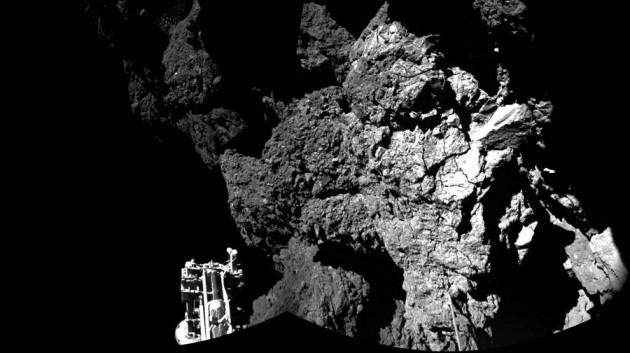Rosetta mission: Waiting for Philae to wake up as comet 67P approaches Sun

The European Space Agency is keeping all eyes and ears open for any sign of contact from the Philae lander slumbering on comet 67P/Churyumov–Gerasimenko.
Three days after landing on the comet on 12 November culminating a ten-year journey aboard mothership Rosetta, the 100 kg robotic probe ran out of power after bouncing to a shaded rocky outcrop on the comet.
While its location on the dusty iceball has been narrowed down to an area of 30 by 50 metres (98 by 164 feet), Rosetta's cameras have not been able to spot the probe.
Now, as 67P gets nearer to the Sun, scientists hope that the lander will be able to harness enough solar power to reboot and transmit a signal to the orbiting Rosetta craft.
Rosetta is in a good position till 17 May to receive Philae's signals.
Even after that scientists will be watching out for any signs of revival. Rosetta's flight plan is fluid after a navigation problem forced it to change orbits in March.
But the window of opportunity will be shrinking as the comet will reach its closest point to the sun by August 13 after which it will veer away into deep space.
There are many conditions which have to work for Philae to be resurrected, reports Nature.
Temperature is a main worry, according to Stephan Ulamec, lander project manager at the German Aerospace Centre (DLR) near Cologne.
The lander's thermostat must register an internal temperature higher than −45 °C for Philae to use power to reboot. The batteries will recharge only after temperatures reach above 0 deg.
A losing battle?
Approaching the sun increases the likelihood of rising temperature but as the comet rotates the lander will experience only 80 minute bursts of sunlight before darkness of 11 hours follow. The probe is tilted, further causing diminishing amount of solar energy hitting it.
The good news is that Philae is insulated and heated by solar absorbers and panels.
The other unknowns of its resting place, the shadows, etc, will also play a role in the amount of sunlight reaching it.
Materials contracting under the cold could cause soldering points in the probe to snap while dust on the solar panels can reduce their efficiency.
Philae may already be awake and sending signals that Rosetta has not caught or it could be incapacitated by low power to communicate, the team says.
Rosetta's best chances of picking up signals will be at distances lesser than 300 kilometres from Philae, on the same side of the comet, and with both crafts' antennas broadly aligned.
Before it was lost, the Philae lander had returned exciting evidence of organic molecules on the comet.
Launched in March 2004, Rosetta visited Mars, came back to Earth (after briefly being misidentified by astronomers as an asteroid), visited asteroid 2867 Šteins 5 and then was back to Earth again; next it dropped in on asteroid 21 Lutetia, before finally reaching Chury in August last year.
© Copyright IBTimes 2025. All rights reserved.





















